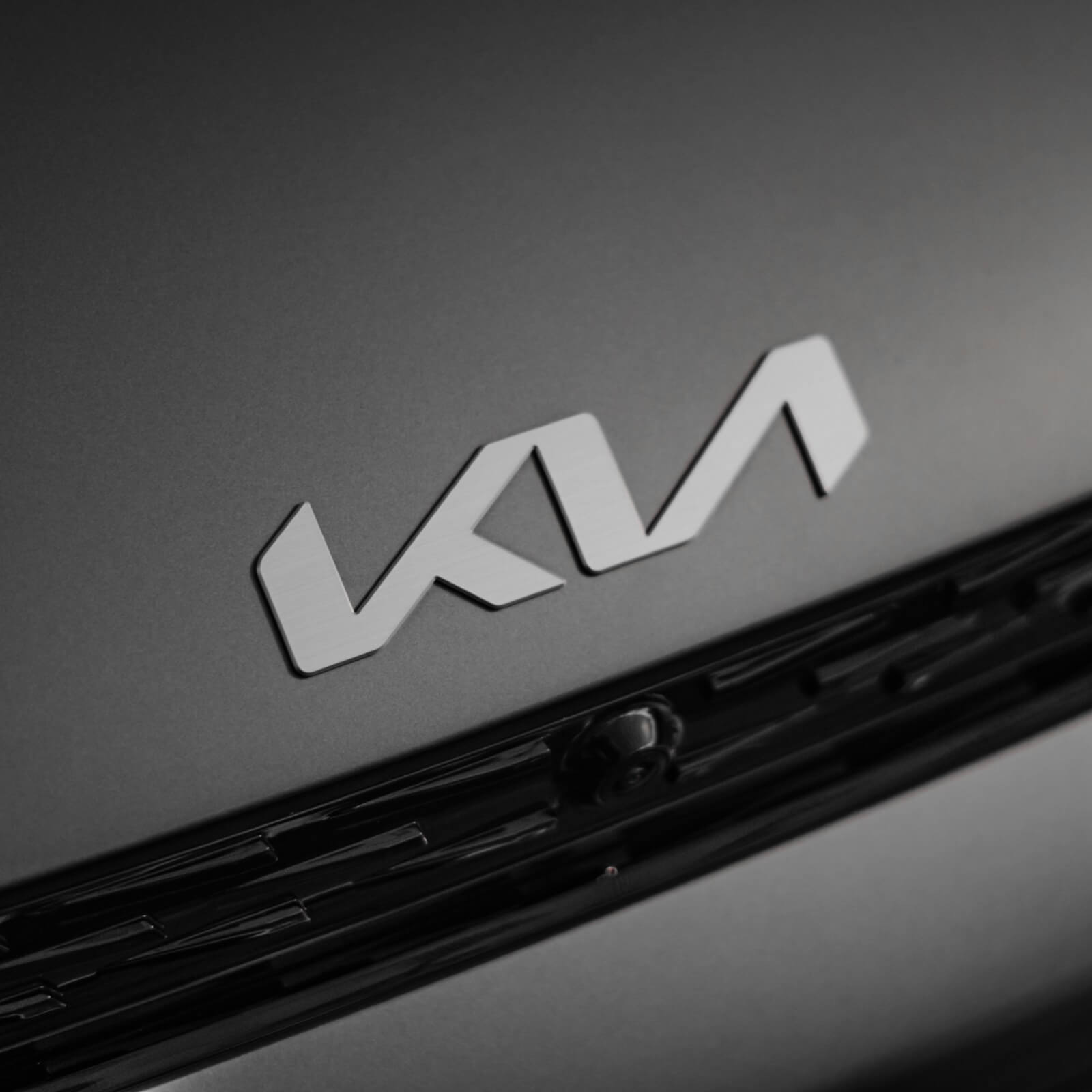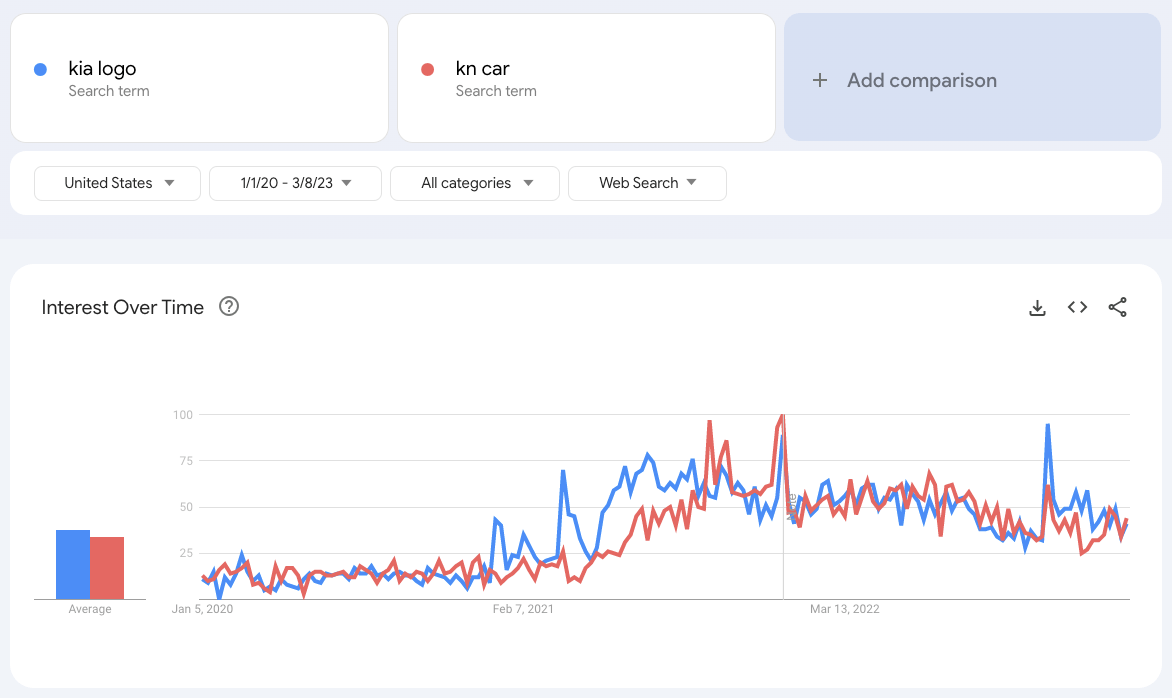
Brand Breakdown: The Case of Kia
Nov 9, 2023|Read time: 5 min.
Brand Breakdown Series
Welcome to the Brand Breakdown series, a monthly deep dive into the marketing strategies of leading global brands.
We’ll be exploring the winning, and losing, strategies that are pushing the boundaries of traditional marketing through the lens of owned asset optimization (OAO), a new approach to building consumer connection.
Subscribe today for unique insights straight to your inbox, exploring how the world’s most recognizable brands are connecting with consumers.
There’s a difference between getting noticed and being known. In the world of marketing, within that somewhat subtle difference lies an ocean of opportunity.
You might remember the now-infamous Kia logo redesign, was initially received as a failure as far as brand recognition strategies go. Some argue that, in an attempt to follow a more elevated and futuristic design trend, Kia caused undue confusion around their logo, a critical asset for any brand to get right in the game.
Design critics pounced on its illegibility, and marketers have been writing about the hit to Kia’s brand recognition and branded search ever since its debut.
But what one industry expert calls confusion, another could call interest, curiosity — or attention.
When we look at the data, we see consumers flocked to Google to ask questions about both the “kn car” and “Kia logo” along the same trending timeline.

Data source: Google Trends
Does this signal confusion? In the context of the story, it could.
Attention and opportunity? Without a doubt.
Whether Kia set out to or not, they created 1.6 million new annual branded searches with a single marketing initiative. Those searches were driven in part by the human psychology behind any rebrand or redesign: our predisposition to notice things that are unfamiliar—like a new car logo that’s suddenly everywhere.
Capturing (accidental) attention with owned assets
Ultimately, Kia succeeded in sparking attention and getting noticed—even if people didn’t know it was them at first. Sometimes the best marketing strategies leverage a little mystery, even when not on purpose.
But was Kia able to control the demand they created?
Brand Breakdown Emails
Unique insights and analysis to supercharge your marketing strategy — direct to your inbox.
Many argue the move was an industry failure as far as a brand recognition strategy goes. But if you look at performance and impact from the perspective of consumer attention, the script starts to flip.
As more consumers took notice of the new logo, they searched for information about “kn car.” Keyword datasets expanded and annual search volume ballooned, sparking a viral news cycle about how many people were searching for a car that didn’t exist.
But generating attention doesn’t automatically translate to true opportunity or positive impact.
This is especially true if you fail to capture and control the demand you’ve created, missing opportunities to connect with consumers by not showing up with content optimized to meet their needs.
To their credit, Kia marketers took notice of the new interest and thoughtfully published content about kn cars on owned domains at the same time that Google began to associate the term with the Kia brand.



Data source: Semrush
As a result, individual Kia dealership webpages protected a good chunk of the search market share against news organizations for “kn car” queries, owning 55% of the total market share for this topic.
Outperforming publishers for online attention has become critical in being able to make direct connections between the Kia brand and consumers.
Kia now controls about 40% of the total search market share they generated, according to data from Carina, Terakeet’s proprietary insights platform.
See Who’s Winning in Your Industry
Our proprietary technology is driving unique, industry specific insights for our clients.
Using OAO to outperform competitors
Ultimately, Kia skillfully harnessed the power of their owned platforms and created valuable owned assets to capitalize on the opportunities they created, but let’s explore how an intentional, longer-term owned asset optimization (OAO) strategy could yield even better outcomes in consumer connection.
While Kia controls about 40% of the total search market share they generated, publishers still own nearly 58%.

Data source: Carina – Terakeet
This is arguably because publishers are creating content that’s better optimized for what people are really looking for right now—or what they mean in the specific moment when searching phrases such as “kia logo.” 1
But just because third-party publishers are winning, doesn’t mean Kia can’t. With an OAO strategy, any conversation about your brand—whether you started it or not—is an opportunity to gain control and connect.
“The expanding portfolio of digital assets at the core of OAO retains value even if the brand shifts focus, as opposed to advertising, where value only comes while the brand is spending. OAO gives the brand-consumer data and proven messaging to draw from when optimizing campaigns in other channels.
— Pat Danial, Chief Technology Officer
If we look at the plot points of Kia’s logo redesign through the lens of OAO, the strategic formula begins to reveal itself:
- Prior to launching the redesign, Kia updated their website to reflect their new logo.
- As consumers encountered the change IRL and across online channels, they took their winding journeys, leaving consumer data behind in the form of organic search queries.
- Both Kia marketers and third-party publishers drew insights from that data and optimized owned assets — in this case, pages on their site — to answer queries and connect with consumers.
Connecting with consumers by meeting their needs
Conversations evolve and intent changes in real-time, all the time. This is where nimble publishers have been able to gain more of a foothold for the branded “Kia logo” topic.
A more proactive, and holistic, owned asset optimization strategy could help Kia transform attention into real connection. By employing a persistent cycle of monitoring and interpreting consumer intent data, Kia can create content optimized to meet the needs of their consumers, expand their online presence, and build valuable relationships with their audience.
While Kia successfully positioned themselves to meet and answer specific consumer questions around the “KN car,” adopting a comprehensive OAO strategy would further safeguard their brand, and help them leverage evolving topics and consumer behavior to create more connections and ultimately boost brand revenue.




